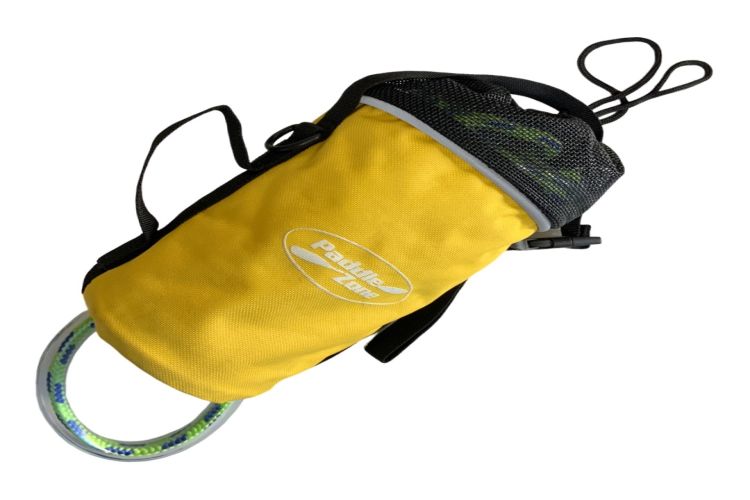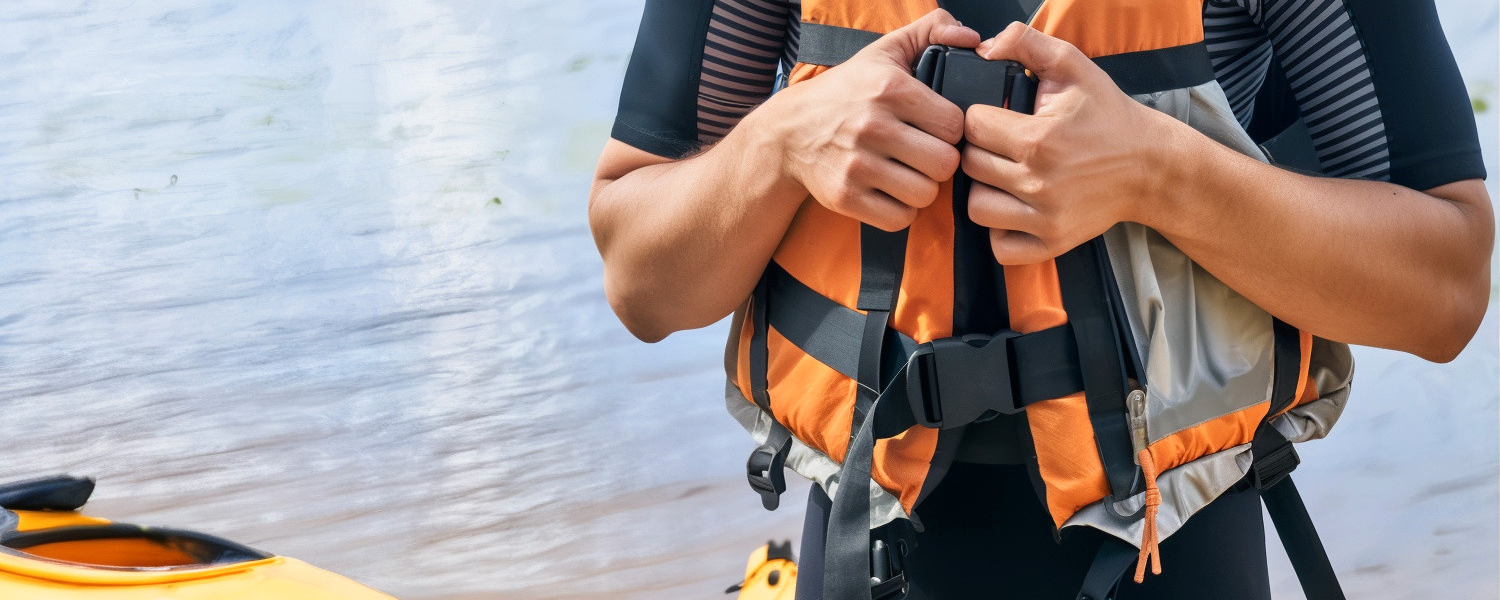Ensure your kayaking adventures are safe and enjoyable with these essential safety items. From personal flotation devices to signaling devices, we've got you covered with everything you need to know to stay prepared on the water.
Kayaking is great for exercise, exploration, and adventure, but every expedition should always be as safe as possible. It doesn’t matter if you’re an experienced paddler or completely new to the sport–everyone needs to take safety seriously!
The good news is that there is a wide range of kayaking safety accessories that are both easy to find and easy to use. You’d also be amazed at just how much you can fit into your kayak and bring along on your next adventure.
Today we’re going to cover the essential kayak safety items that every kayaker needs. Keep reading to learn everything you need to know!
Staying Safe: The Basics
Australia’s waters and weather can be unpredictable, so it’s always important to go in with the right mindset. This includes having a clear knowledge of your skills, fitness level, and limits, as well as an understanding of the environment you’ll be navigating.
Safety also hinges on whether or not you adopt a proactive attitude toward risk management. This means planning your route, checking weather conditions before setting out, understanding what kayaking safety items you may need and always informing someone about your kayaking plans and expected return time. These practices help reduce risks and act as a safety net should you ever find yourself in trouble.
Personal Flotation Devices (PFD’s)
First things first, wearing a personal flotation device (PFD) is one of the most important safety precautions you can take when kayaking. PFD’s are purposely designed to provide buoyancy and support in the water. Once fitted, this keeps you afloat and visible in the case of a capsize or emergency.
Whether you're paddling in calm waters or in challenging conditions, wearing a PFD is vital for your overall safety and peace of mind on the water. There is also a range of inflatable and standard styles available, including options for ocean, recreation, and touring.
It is important to note that in most Australian states and territories it is law that a PFD must be worn. We recommend that you check with your local waterway authority to ensure you are staying safe and possibly risking a big fine
Of course, it’s vital that your life-jacket fits you properly. Beyond the obvious issue of comfort, this ensures that it stays in place and doesn’t slip off in the event of a sudden capsize. These rules apply to kayakers of all shapes, ages, and sizes.
Luckily, there is a great collection of PFD’s available that are both comfortable to wear and suitable for paddlers of all ages and experience levels. If you don’t know your size, the best approach is to visit your local kayak store. Here, you can really get a good gauge of how the PFD fits and feels.
The Right Kayak
Before we dive any further into safety equipment and accessories, ensuring your kayak is suitable for you and the type of paddling and the paddling adventures you are undertaking is critical. Is it sea worthy? Are there any leaks? Are any deck fitting loose and does the rudder (if fitted) work well? These considerations must all be addressed before you head to the water.
If you don’t currently have a kayak, the best course of action is to get one from a reputable kayak store. This way, you’ll have access to reputable brands and models that adhere to all current Australian safety standards.
Newcomers or less experienced paddlers should avoid kayaks designed for the more advanced as they are generally more difficult to control, which naturally increases the risk of capsizing. For example, if you’re choosing between a sit-on kayak or sit-in kayak, there's a lot to consider. Similarly, the different styles (such as sea kayaks, fishing kayaks, and recreational kayaks) each have their distinctive features and benefits.
Just like a PFD, you should always go with a kayak that’s the right size for you. In this case, you can always reach out to the professionals for expert advice!
An Offshore Paddling Kit
Venturing into offshore waters? Make sure you pack a kit with all of the essentials. While this kit can be tailored around your specific activity, there are some fundamentals that apply to almost any situation; these include means of communication, spray skirt, UV protective clothing, rescue ropes, bilge pumps, a GPS or Personal Locator Beacon, and a paddle keeper/leash.
It's also recommended that your kit contains a comprehensive first-aid kit that's ready to assist both general and specific potential injuries. This should be accompanied by the skills necessary to use every item effectively.
If you’re planning to be out there for a while, you can also pack water and food, as well as dry clothing. Lastly, include a boat-specific repair kit that can handle common issues like leaks or paddle damage, which will allow you to manage minor repairs on the water. Remember it is always ideal to paddle with others or if paddling alone, always tell someone where you are planning to paddle and your expected time of return.
Need a PFD or extra kayak accessories? Check out our great range of safety items now!

Capsize Prevention
Capsize prevention is key to maintaining safety while kayaking. Familiarising yourself with various support and bracing strokes can significantly reduce the risk of capsizing. These techniques enhance your stability and help you manage rougher waters or unexpected shifts in balance.
However, should you find yourself in the water, it’s critical to stay with your kayak. In an emergency, having access to a rescue throw bag can be a lifesaver. A compact rescue throw bag is generally designed to be compact, lightweight, and easy to deploy, making it perfect for quick response in rescue scenarios.
With the right rope length, you can quickly reach a fellow paddler in distress or secure your own position in the water. Whether you’re paddling solo or with a group, a rescue throw bag is an essential piece of safety equipment that every kayaker should have.
Having a spray skirt fitted to your kayak when paddling in rougher weather or offshore is critical. A neoprene or nylon spray skirt will assist in preventing water from entering your cockpit.
Know Your Limits
Fitness plays a critical role in both the enjoyment and safety aspects of kayaking. Paddlers must maintain good physical condition to handle potential challenges such as changes in weather conditions or strong tidal movements and currents.
Having a reserve of energy can be crucial for completing a journey safely when conditions deteriorate. For this reason, kayakers should plan conservatively based on their current fitness levels and experience, then gradually build up to more challenging expeditions. Ensuring you have water and some nourishment will help as well as taking a break and resting occasionally, even on shore to stretch your legs is a good idea if it’s safe to do so.
A Reliable Anchor Kit
An anchor kit is a vital piece of safety equipment for kayakers, especially when paddling in areas with strong currents or windy conditions. By anchoring your kayak, you can maintain your position in the water, providing stability and control even in challenging conditions. This is also a must have if you’re planning to go fishing or simply want to let your hair down and take a break!
Anchor kits are designed to be lightweight, easy to deploy, and highly effective at keeping your kayak in place. Above all, your anchor kit can help to ensure that you stay safe and secure on the water.
The other good thing about anchor kits is that they are very affordable–especially for how much value they provide!
Rescue Throw Bags
In an emergency, having access to a rescue throw bag can be a lifesaver. A compact rescue throw bag is generally designed to be compact, lightweight, and easy to deploy, making it perfect for quick response in rescue scenarios.
A must for white water paddlers and strongly recommended for offshore and adventure kayakers, this could be a life saver. With the right rope length, you can quickly reach a fellow paddler in distress or secure your own position in the water. Whether you’re paddling solo or with a group, a rescue throw bag is an essential piece of safety equipment that every kayaker should have.

Bilge Pumps
A bilge pump is an essential tool for removing water from inside your kayak. Whether it's from waves, splashes, or rain, water can quickly accumulate inside your kayak and affect its stability. A bilge pump allows you to quickly and efficiently remove this water, helping to prevent capsizing and keeping you safe on the water.
Bilge pumps are generally lightweight, durable, and easy to use, making them an essential addition to any kayaker's safety kit.
UV Protective Clothing
Any time you head out to the great outdoors and into the Australian sun, make sure to wear your sun smart clothing. We also covered this in a recent blog, but let’s go through it again right now.
Before you head to paddle, we recommend stocking up on UV resistant tops, hats, sunglasses, SPF sunscreen, balm, and gloves. These will allow you to enjoy your time outdoors and avoid a nasty sunburn! A side note is to ensure you stay hydrated.
A Drift Chute
In windy conditions, a drift chute can help you maintain control of your kayak and reduce drifting. By deploying a drift chute off the side of your kayak, you can slow down your drift and maintain a straight course, even in strong winds.
Our drift chutes are designed to be easy to deploy and highly effective at reducing drift, giving you greater control and stability on the water. Whether you're paddling in open water or navigating through narrow channels, a drift chute can help keep you safe and on course.
Backup Paddle Float
A paddle float is an essential piece of safety equipment for kayakers, especially in the event of a capsize. By attaching a paddle float to one end of your paddle, you can turn it into an outrigger, providing additional stability and support as you re-enter your kayak.
Our paddle floats are either foam or inflatable, lightweight, and easy to use, making them an essential addition to any kayaker's safety kit.
A Paddle Leash
Losing your paddle in the water can quickly turn a fun day of paddling into a dangerous situation. This is why it's a great idea to have a paddle leash to keep your paddle secure and within reach at all times. Paddle leashes are designed to be durable, reliable, and easy to use, making sure that your paddle stays attached to your kayak even in rough conditions. A tip here is to ensure the paddle leash attaches the paddle to the kayak, not to you.
Emergency Communication Devices and Personal Locator Beacons (PLB)
In emergencies, a personal locator beacon (PLB) can be a literal lifesaver. PLBs and other emergency communication devices are designed to send out a distress signal with your location to rescue services, allowing them to quickly locate and assist you in an emergency.
A PLB can provide peace of mind knowing that help is just a push of a button away. With a compact and lightweight design, they are also easy to carry and can be attached to your PFD for quick access in an emergency.
Get All the Safety Gear You Need at PaddleZone
Sourcing products from the industry’s best, we’ve got all the safety items you need to enjoy Australia’s waterways in a safe manner. From anchor kits to rescue bags, paddle floats and more, PaddleZone is also your one-stop shop for kayak accessories.
Our safety items are the perfect way to complement your next kayaking journey. So, explore the collection, stock up, and make every adventure as safe as possible!



